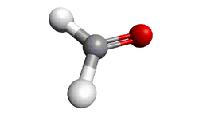|
This is an update of version 1 from Mar. 2000 and
of version 2 from Mar. 2003/Aug. 2005.
The experimental data were summarized and
reevaluated by
(1) H. S. P. Müller and F. Lewen,
2017, J. Mol. Spectrosc. 331, 28.
Besides new data betwen 1.37 and 1.5 THz from
that study, transition frequencies were taken mostly
from
(2) S. Brünken, H. S. P. Müller, F. Lewen, and G. Winnewisser,
2003, Phys. Chem. Chem. Phys. 5, 1515;
and from
(3) R. Bocquet, J. Demaison, L. Poteau, M. Liedtke, S. Belov, K. M. T. Yamada,
G. Winnewisser, C. Gerke, J. Gripp, and Th. Köhler,
1996, J. Mol. Spectrosc. 177, 154.
Additional larger sets of transition frequencies
were taken from
(4) R. Cornet and G. Winnewisser,
1980, J. Mol. Spectrosc. 80, 438;
and from
(5) S. Eliet, A. Cuisset, M. Guinet, F. Hindle, G. Mouret,
R. Bocquet, J. Demaison,
2012, J. Mol. Spectrosc. 279, 12.
Transition frequencies with Ka = 1
and resolved 1H hyperfine splitting
were taken from
(6) K. D. Tucker, G. R. Tomasevich, and P. Thaddeus,
1971, Astrophys. J. 169, 429;
and from
(7) K. D. Tucker, G. R. Tomasevich, and P. Thaddeus,
1972, Astrophys. J. 174, 463.
Additional hyperfine splitting at higher Ka
as well as center frequencies were reported
by
(8) J. C. Chardon and D. Guichon,
1973, J. Phys. 34, 791.
Further data were taken from
(9) J. C. Chardon and D. Guichon,
1977, J. Phys. 38, 113;
from
(10) J. C. Chardon and J. J. Miller,
1981, Can. J. Phys. 59, 378;
from
(11) M. Takami,
1968, J. Phys. Soc. Japan 24, 372;
from
(12) D. R. Johnson, F. Lovas, and W. H. Kirchhoff,
1972, J. Phys. Chem. Ref. Data 1, 1011;
and from
(13) D. Dangoisse, E. Willemot, and J. Bellet,
1978, J. Mol. Spectrosc. 71, 414.
Extensive infrared ground state combination differences were
also used in the fit; they were reported in
(14) H. S. P. Müller, G. Winnewisser, J. Demaison, A. Perrin, and A. Valentin,
2000, J. Mol. Spectrosc. 200, 143.
Lines with uncertainties of larger than 100 kHz measured below
1000 GHz as well as lines with uncertainties larger than
200 kHz above 1000 GHz have not been merged because of the
large number of lines with smaller uncertainties.
The present data set improves in particular the prediction of
a-type R-branch transitions with high Ka.
The predictions should be sufficiently accurate for all astronomical
purposes. Predictions with calculated uncertainties of larger
than 200 kHz should be viewed with caution.
The 1H hyperfine splitting can be resolved for Q-branch
transitions with low values of J and Ka = 1.
Transitions with Ka = 2 do not show hyperfine
splitting. Those with Ka = 3 are likely
too high in energy. The entry also includes now R-branch transitions
with J up to 5 and Ka = 1. A separate
hyperfine calculation is provided. The partition function
takes into account the hyperfine splitting.
At low temperatures, it may be necessary to discern between
ortho-H2CO and para-H2CO.
The ortho states are described by Ka odd,
the para states by Ka even.
The nuclear spin-weights are 3 and 1 for ortho-H2CO
and para-H2CO, respectively.
The JKaKc = 111
is the lowest ortho state. It is 10.5390 cm–1 above ground.
Separate
para and
ortho predictions are available along with separate
para and
ortho partition function values.
The dipole moment was measured by
(15) B. Fabricant, D. Krieger, and J. S. Muenter,
1977, J. Chem. Phys. 67, 1576.
|
